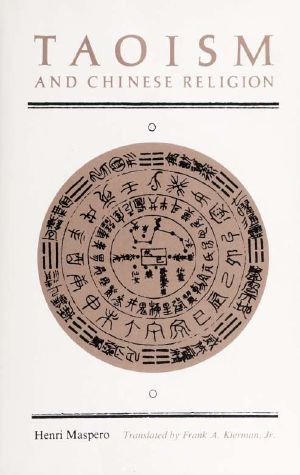Taoism and Chinese Religion

- Authors
- Maspero, Henri
- Publisher
- University of Massachusetts Press
- Tags
- philosophy , religion , taoism -- china , china -- religion
- ISBN
- 9780870233081
- Date
- 1971-01-01T00:00:00+00:00
- Size
- 0.94 MB
- Lang
- en
This book is a translation of Le Taoisme et les Religions Chinoises, which was posthumously published in France in 1971. It is the first English translation of most of the seminal works on Chinese religion of the great sinologist Henri Maspero. Maspero (1883-1945) was the first Western scholar to study the vast and recondite compendium of Taoist writing, the Tao-tsang. As his discovery of its historic meaning was explained in publication, it exploded forever the myths that China was either a country without religion or one with three religions. Maspero, as did other French sinologists, rejected the idea that Confucian¬ism was the philosophy of the majority of ancient Chinese.
The first part of the book closely examines Chinese society, religion, and folk-myth; the second part focuses on the practice and form of Taoism specifically and includes an extensive investigation of yoga-like procedures of nutrition, breathing exercises, and sexual techniques—all designed to insure personal immortality in ancient Taoism. The titles of the nine "books" comprising this study give an indication of its breadth and variety: Chinese Religion in Its Historical Development; The Mythology of Modern China; The Society and Religion of the Ancient Chinese and the Modern Tai; How was Buddhism Introduced into China?; Taoism in Chinese Religious Beliefs during the Six Dynasties Period; The Poet Hsi K'ang and the Club of Seven Sages of the Bamboo Grove; An Essay on Taoism in the First Centuries A.D.; HOW to Communicate with the Taoist Gods; Methods of "Nourishing the Vital Principle" in the Ancient Taoist Religion.
"It is largely thanks to [Maspero's] pioneer work in the fields of Chinese religion, anthropology, linguistics and history that China's contribution to the achievement of man could first be reviewed on terms of parity with those of other civilizations.
"To the question whether his discoveries, opinions and interpretations have been out¬dated by the subsequent thirty years' re¬search, it may be answered that leading scholars still rely with the utmost confidence on his writings as a framework whose validity has outdated their most recent findings, and whose detail has in many cases not been bettered."—Michael Loewe, University of Cambridge.
Frank A. Kierman, Jr., teaches history at Rider College and is co-editor of Chinese Ways in Warfare. (Publication of this book has been aided by a grant from the National Endowment for the Humanities.)
On the jacket is an engraved diagram of a mirror-back, of T'ang date though after the pattern of Han mirror-mandalas, from the Taoist Canon, ch. 196. For explanation of its elements and translation of the poem it includes, see Edward H. Schafer, "A T'ang Mirror" in Early China 4 (1978-79), pp. 56-59.